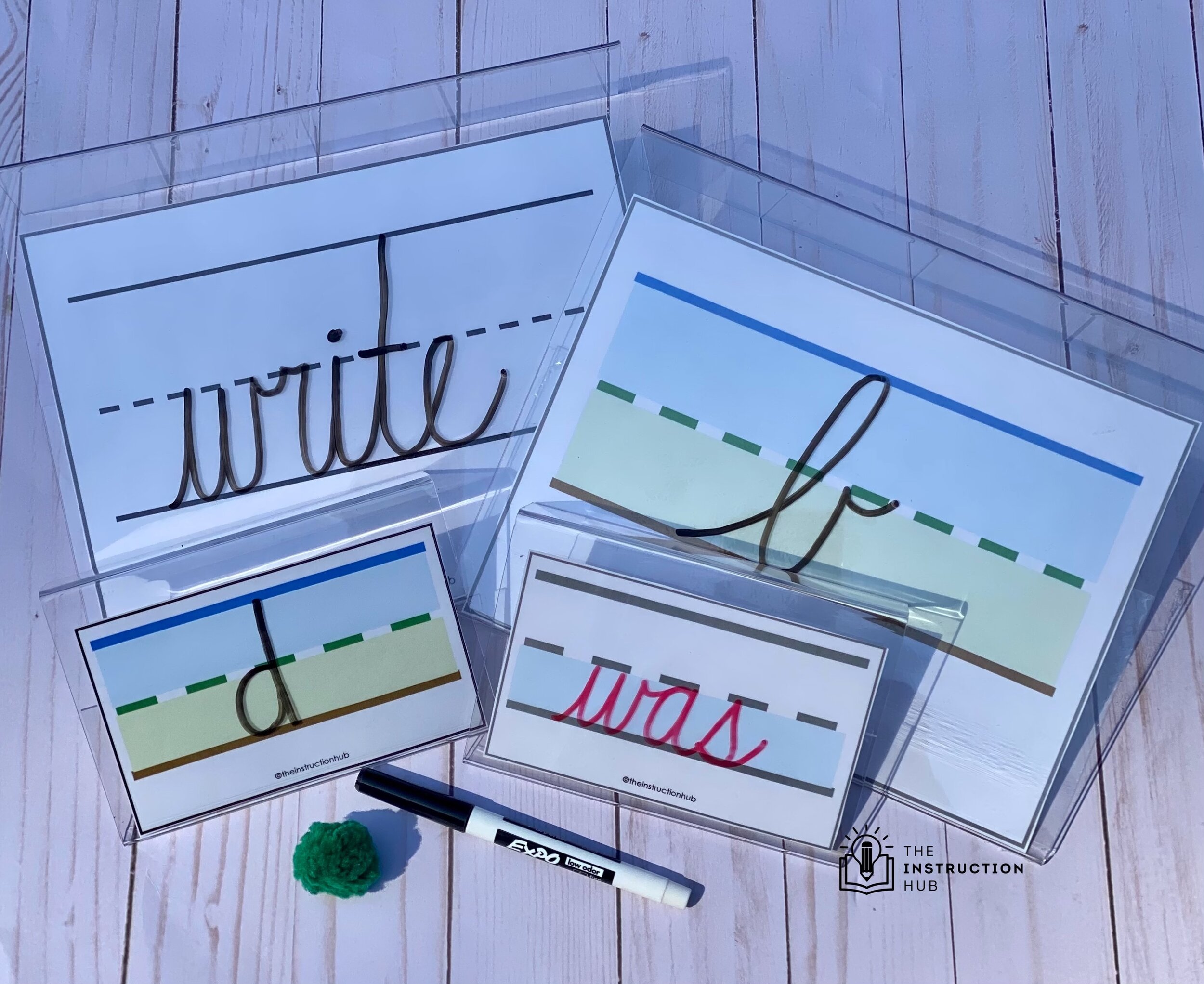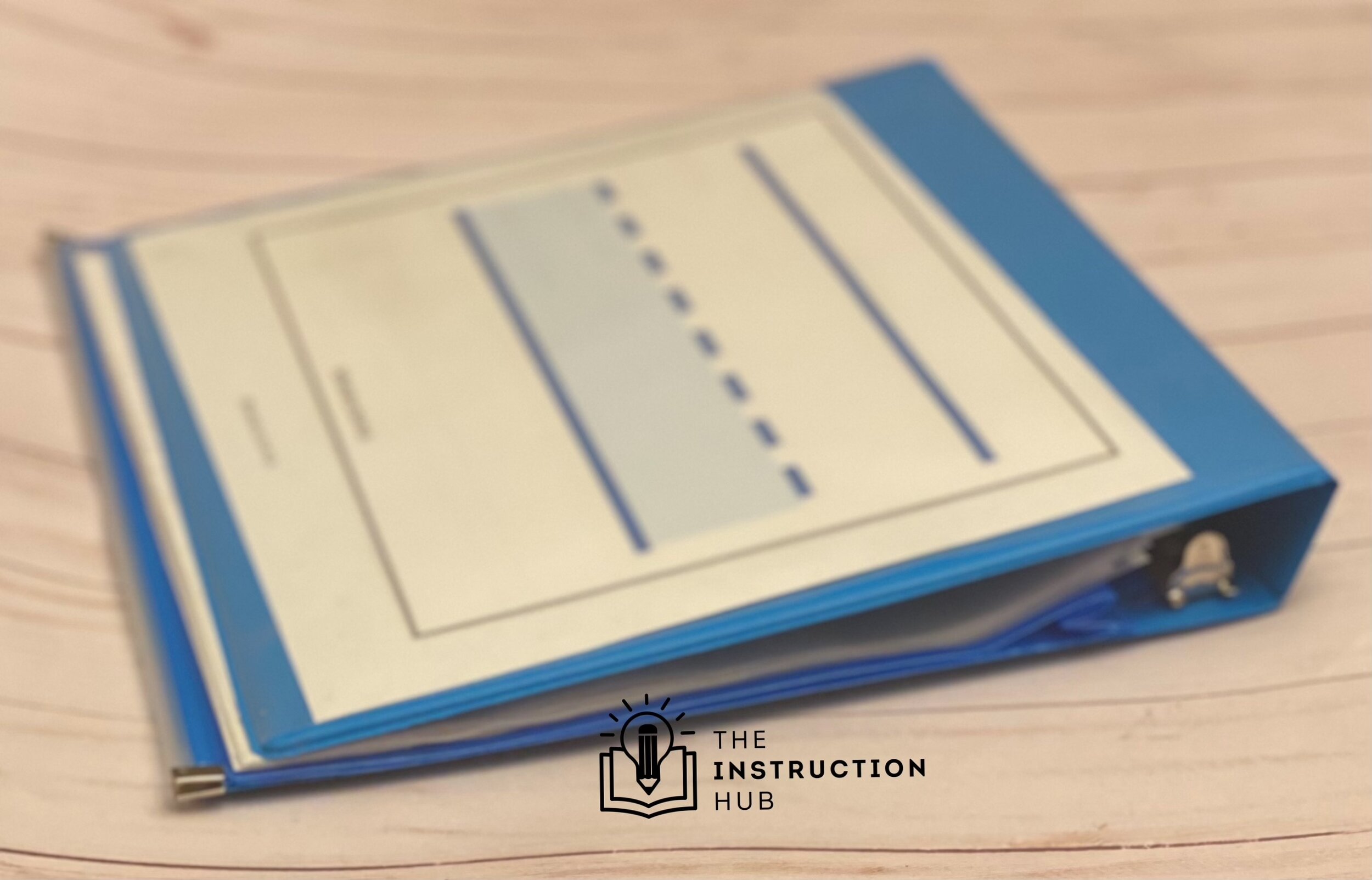Using Slant Boards for Instruction and Support
We are on a journey diving into the learning profile of our child. It is something that I hope to share tidbits of, as she feels comfortable with me sharing.
One tip I have learned that is helpful in our school work is using a slant board.
These helpful tools can be quite pricey, although if needed we will get one. However, for now I have taken a Dollar Store 8 x 10 plastic photo frame and made one of our own. You can also pick up the full page handwriting template that works with these in my Resource Center. Did I mention it is free? I made the templates smaller than the actual frame so that the pressure is put on the base of the frame when writing. Hopefully this will minimize breakage.
So why would I use a slant board for my child or my students?
Now here is the caveat, I am not an occupational therapist nor do I claim to be an expert. I am a mama bear, who is researching everything I can get my hands on to give my child the best learning experiences and resources possible. I do have experience and credentials in the field of education, and I am a parent who has a child in occupational therapy. My “expertise” (however limited) would come from that perspective. I would advise you to consult with your child’s doctor or an occupational therapist for your individual child’s needs. This is just what I have learned for my own child and I thought maybe it could be a starting point for you.
By allowing my child to read at an angle, it puts all of the words on one plane. I am learning that when we are reading on a flat surface, our brain is working harder to make sense of the forms and what we are reading. By elevating it around 20 degrees, you put less stress on the ocular system. Think about it, when you are reading a book do you ever find yourself tilting the book upwards to read? I do, and I do it without thinking. Giving the slant board allows students to do the same.
Body positioning for writing- I have been reminded the incredible insight of my child’s occupational therapist, it is important to be in a position for writing where your ankles are flat on the floor at 90 degrees, your knees are bent at 90 degrees, and your torso is bent at 90 degrees. Now many of you may be laughing because some students do well just to find the chair. You would be correct because that is me….I need movement….I love a swivel chair. However, if you can have moments of writing where the student is in this position it is helpful. The slant board helps shoulder and wrist position to further aid the body in writing. It helps give support for upper body position.
A slant board helps with pencil grasp. By providing an elevated surface, it guides the student to extend their wrist and allows more muscles to be used for writing. It should also help ease writing fatigue.
When do I use it during instruction?
When working on writing irregular sight words.
Working on letter formation - whether it be the introduction of a letter or letter formation review.
If you are an Orton-Gillingham practitioner, I would use it for auditory drill or words to spell.
Number formation practice in our math studies
Reading a passage
What other items can be used as a slant board?
Three ring binder - When I first posted about the photo frames, I had many comments about notebooks. I do use three ring binders as slant boards as well. I tend to like the 2 inch size for this purpose.
Clipboard secured on a slanted object.
The key is that the writing surface is secure. The student does not need to be worried about holding the document at an angle in order to write.
I hope this is a helpful tip for you! I hope that you can use the plastic photo frame idea. If you do have success with it, feel free to tag #theinstructionhub or @theinstructionhub so I can see all of the creative ways you come up with to use it!
This information is the intellectual property of ©2021 The Instruction Hub. Do not use or repurpose without expressed permission from The Instruction Hub. Please give The Instruction Hub an attribution if you choose to use, reference, or quote/paraphrase copyrighted materials. This includes but is not limited to blogs, social media, and resources.




